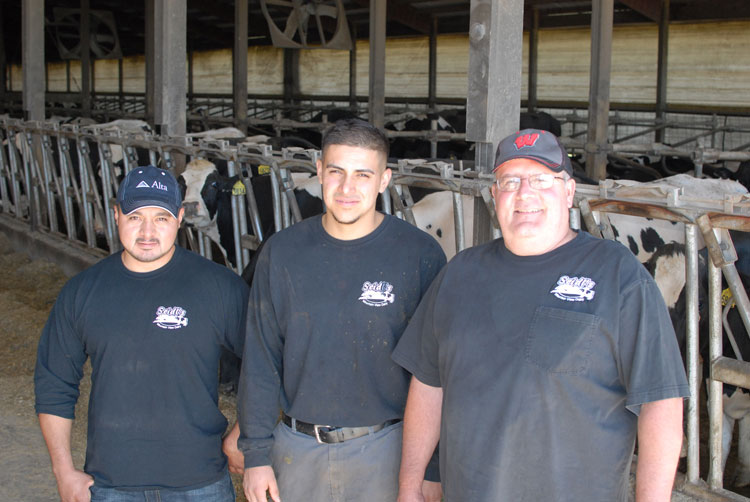
“We do not have or use live bulls on our dairy. Cows that are difficult breeders are usually double-bred and some are even given GnRH,” said Steve Paider with Seidl Mountain View Dairy. “We label a cow DNB (do not breed) because of low production. Cows that are double-bred are given GnRH at first breeding and a second insemination within 15 hours of first breeding, most cases breeding in afternoon and early next morning.
On double breeding, we have 54 percent conception, and really problem cows given GnRH have 48 percent conception,” noted the dairy farm manager for the Luxemburg, Wis., dairy farm that won Platinum honors in this year’s Dairy Cattle Reproduction Council’s ninth annual awards competition.
All six of this year’s Platinum winners of the Dairy Cattle Reproduction Council’s awards share additional insight in this Hoard’s Dairyman Intel as well as the Round Table found on pages 707 to 709 of the November issue of Hoard’s Dairyman. This year a record 128 herds were nominated for the award from 18 U.S. states and Canadian provinces.
Here are additional responses to the question, “How do you handle problem-breeding cows?”
Copperhill Farm, Fairfax, Vt.: For problem-breeding cows we will start using a cleanup service sire at breeding four to five, depending on the cow . . . typically Angus. We normally use six to seven Holstein bulls per sire summary. We use around 60 percent daughter-proven and 40 percent genomic sires.
As for continuing to breed . . . we will also look at DIM and production. A cow in late lactation with a low milk average will be considered a DNB (do not breed) at that point.
Dunlea Dairy Farm, Coudersport, Pa.: Fresh cows and heifers spend the first 4 to 12 hours on a bedded pack. Then the older cows and first-calf heifers are kept in separate fresh pens for 20 to 35 days. We try to keep stocking density under 90 percent.
Pfeifer Dairy Farm, Bucyrus, Ohio: Cows that do not breed are sold. We do not own any herd bulls and have not used them for years. We consider them too much of a risk to have around our family members and employees.
When a cow reaches 180 days open, we make her a DNB. We cull open cows after falling to 60 to 65 pounds. Pregnant cows are culled when their production falls below 50 pounds.
Pine Hollow Dairy, Locke, N.Y.: We will breed a cow until 250 to 300 DIM (days in milk), depending on her BCS (body condition score) and solids production. Luckily, we do not have many cows that go beyond 200 DIM (days in milk) before they conceive. We have not had a bull with our cows in over 15 years.
SunBurst Dairy, Belleville, Wis.: Everything is bred A.I. As a rule of thumb, anything after 250 DIM is not inseminated. Cows are evaluated when we inseminate. If we see a problem, we will have the vet check them before enrolling as a DNB. If a health problem arises, the situation is also evaluated.
This Hoard’s Dairyman Intel article is part of an eight-part series detailing top reproduction tips from the Platinum-winning herds for the ninth annual Dairy Cattle Reproduction Council awards competition.
Click here to view previous reports from this DCRC series:
They get postfresh cows off to a great start
To comment, email your remarks to intel@hoards.com.
(c) Hoard's Dairyman Intel 2016
November 14, 2016








